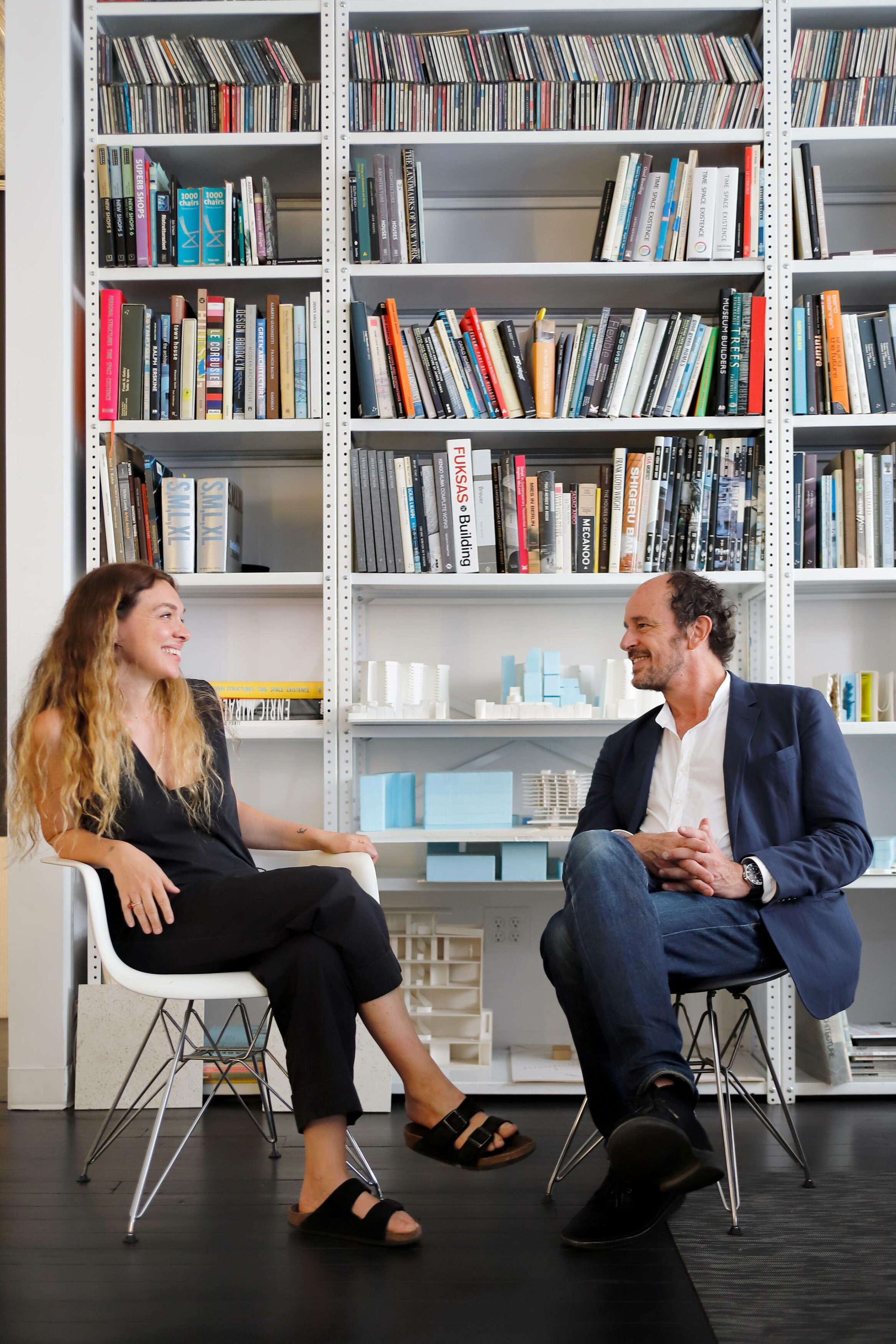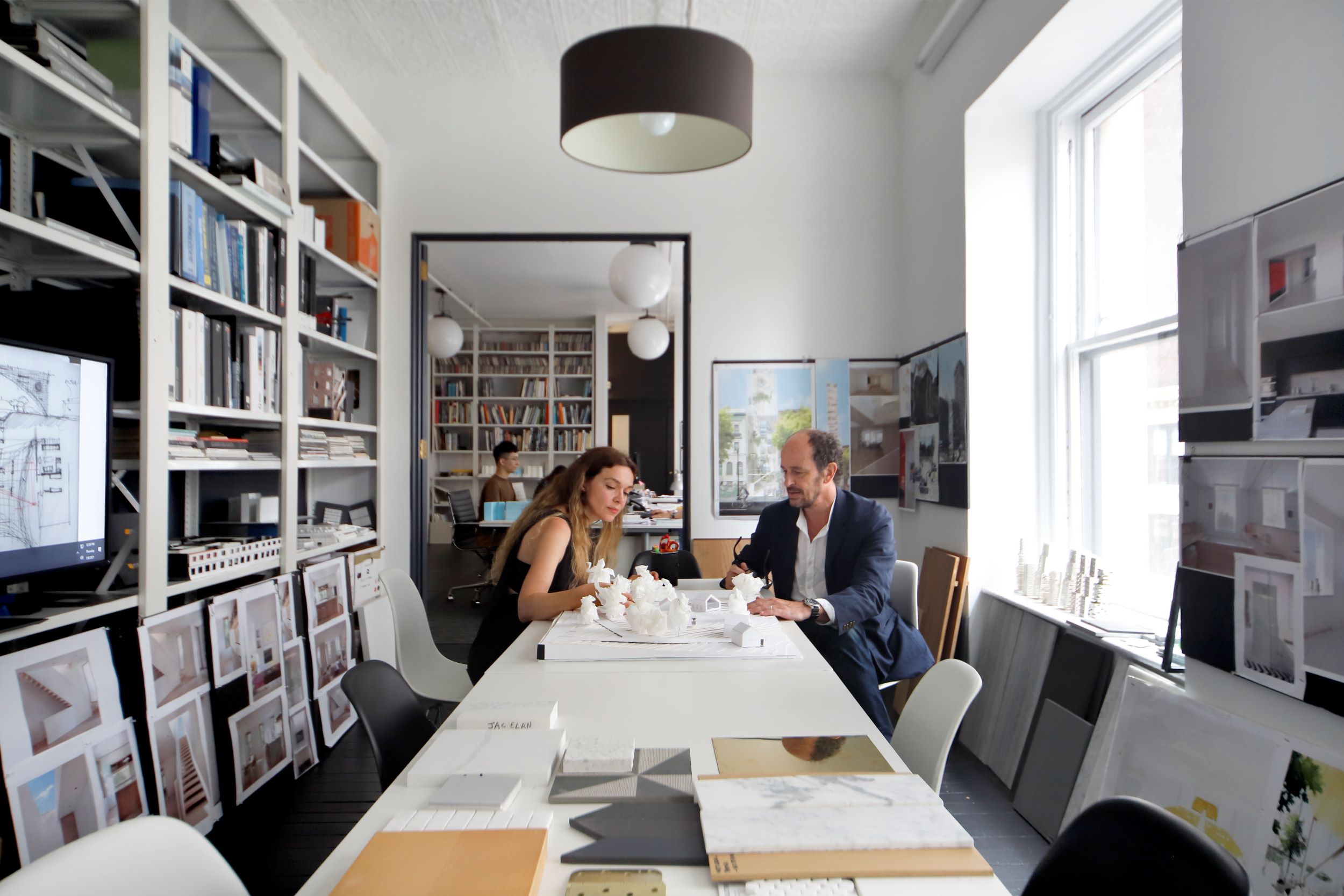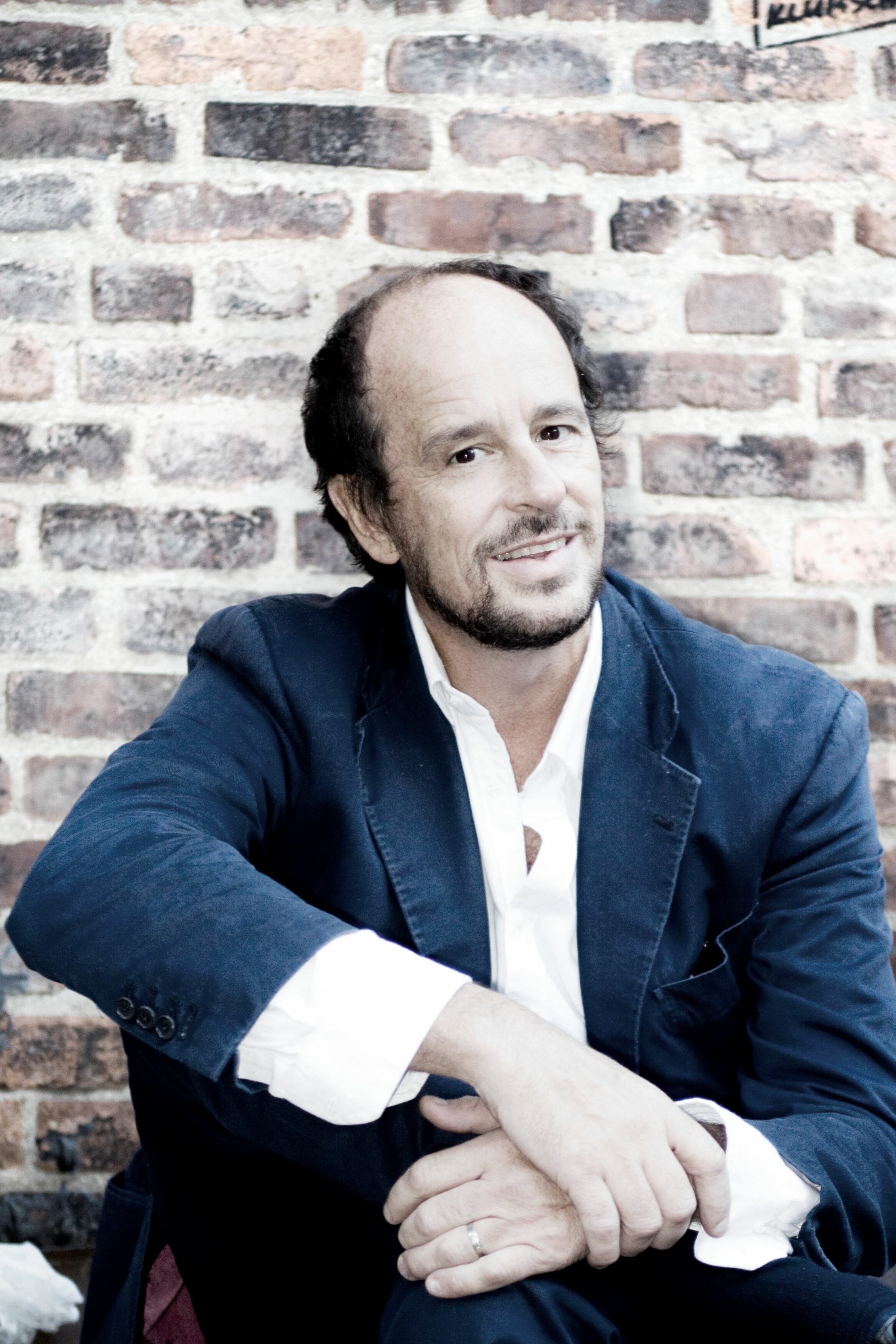“When I began my career, architecture in Europe was a fertile ground for experimentation and theory. I was fascinated by this, but I felt the need for something more practical and immediate. Moving to New York was a decisive step for me.”
Michele Busiri Vici, born in Rome, is an Italian architect who carries on a family tradition spanning over 400 years. Graduating in architecture from Sapienza University in 1995, he moved to New York shortly afterward and after a few years of experience at different architectural offices in the city, in 1999 he founded the studio S4A | Space4Architecture. The office works mainly on residential projects, from small scale such as apartment and townhouse renovations to medium and large scale such as houses and apartment buildings.
Formerly a professor at Columbia University, he currently teaches at the Parsons School of Design, where he inspires and shapes new generations of architects and designers. Moving to America marked a turning point in his career. New York, with its vibrant energy, offered him endless creative possibilities, enriching both his professional and personal vision. We interviewed him for IlNewyorkese.
Hello, Michele. Tell us about the transition from a family with a long tradition in Italian architecture to your current career in the United States, especially in a challenging city like New York.
“I come from a family deeply rooted in the world of architecture, a tradition handed down since the 17th century. Growing up in this environment left a profound mark on me, but my decision to move to the United States was not an obligatory one. It was a burning desire for personal freedom, a search for my own identity beyond family expectations. I felt the need to explore new horizons, to find my path. When I left Rome, I hadn’t planned on staying overseas forever. It seemed like a bold adventure, but it was mostly the desire to live an enriching experience. I gave myself a year, then had the opportunity to extend my stay for another two years at the studio where I worked, and, almost without realizing it, New York became my home. My real adult life began here, at 28, in the United States. In this city, I found my expressive freedom. This drive to seek my own path was my true motivation—a profound desire to discover who I truly was, beyond the expectations and confines of a centuries-old tradition.”
And it was precisely from your New York experience that Space4Architecture was born…
“I had always dreamed of having my own studio. In 1999, along with some architect colleagues I had been collaborating with for some time, we founded our studio in New York, Space4Architecture. The name reflected our deep connection to space, our dedication to architecture, and also the fact that there were four of us at the beginning. We were fortunate to immediately secure some important projects, which allowed us to turn our dream into reality—not just a studio, but a true laboratory of ideas where we could experiment and challenge ourselves. I believe this is something that New York itself taught me: a city where nothing is ever completely destroyed but constantly reinvented. Over time, the journey of Space4Architecture became something bigger than I had ever imagined, a shared journey with people close to me, though my former partners eventually took different paths. Today, my wife, Clementina Ruggieri, and I are the studio’s owners, sharing a mission that I am deeply proud of. Space4Architecture is a place where creating living spaces, as symbols of linearity and creativity, is at the heart of our approach. Every project is an opportunity to bring spaces to life that not only meet our clients’ needs but also enhance the quality of life in the surrounding community. Our goal is to shape meaningful places that are not only beautiful to look at and pleasant to live in but that can make a difference to those who inhabit them.”

How has New York influenced your career as an architect and inspired you?
“When I started my career, architecture in Europe was fertile ground for experimentation and theory. I was fascinated by this, but I felt the need for something more practical and immediate. Moving to New York was a decisive step for me. I wanted to immerse myself in a different context and find my unique voice. New York is an incredibly lively city with a freedom that allows you to explore and experiment. This city taught me to integrate concepts of democracy and inclusion into my projects. Its palpable diversity and contagious energy pushed me to challenge myself in new and surprising ways—not only as an architect but also as a person. Walking through the streets of New York and observing life unfolding on every corner made me appreciate the beauty of spontaneity and the unexpected. New York is a symphony of light and shadow merging within the labyrinth of skyscrapers and alleys. To me, it’s more than just a city; it’s a state of mind. One of the most fascinating features I find here is its grid structure, which often leaves undefined or unfinished spaces. These ‘urban voids’ are a source of inspiration for me, as they represent unexplored opportunities, inviting us to discover new horizons to reinvent. These urban voids, for instance, inspired us to participate in the ‘Bold Ideas for Small Lots’ competition, which called for filling the empty spaces between buildings that were too narrow for residential buildings. Our proposal was to transform these small lots into vertical urban parks, filled with green ramps and plants, creating vibrant and accessible environments for all. These utopian parks would serve as landmarks among affordable housing units and private residences, encouraging interaction between neighbors and residents while also providing dynamic, vital public spaces. This is the magic of New York—a city where challenges turn into opportunities, and every corner tells a unique story. I feel fortunate to be a part of this narrative.”
You mentioned your desire to provide valuable spaces for the community. Can you give us some examples of how you’ve integrated social projects into your work?
“From the beginning of my career, I have always believed in architecture’s power to positively influence the community. Space4Architecture has been involved in various projects, especially through design competitions, aimed at constructing schools and museums with the goal of creating accessible public spaces and enriching city life. Recently, with the design of a 27-story tower in Manhattan’s Lower East Side, where we aimed to create shared green areas among private residences, we had the opportunity to join Design Advocates (DA). Design Advocates is a collective of designers, architects, and planners founded in 2020 in New York, whose mission is to use design as a tool to address social, economic, and environmental challenges, focusing particularly on underprivileged communities. The collective works on social impact projects, often collaborating with non-profit organizations, small businesses, and other entities in need of design support but that may not have the resources to access traditional design services. I am deeply convinced that architecture is not just about construction but also a way of giving back to the community, improving the quality of life, and promoting social inclusion through design.”

How has your connection to Italy evolved after moving to the United States so many years ago?
“My bond with Italy is an essential part of who I am, both as a person and a professional. Even after many years in the United States, I feel a strong connection to my homeland. My family is still there, and we continue to work on projects in various Italian regions, such as Tuscany and Sardinia. Every time I return to Italy, it’s not just for work. I bring my three children with me; I want them to grow up with both cultures. I take them to Italy to connect them with our family, traditions, and everything that makes our homeland unique. My Italian accent is still evident, even though I’ve been speaking English for decades. It’s a tangible sign of my bond with Italy, and I am proud to carry Italian values and sensibilities into every project I undertake. Italy is more than just a place to me; it’s a continuous inspiration. While my life is primarily in New York, my heart remains tied to the vitality of Rome as well as to the coast south of Rome, particularly the Circeo promontorio where my grandfather Michele (also an architect) designed a house immersed in the parco naturale del Circeo. This mix of influences enriches my work and daily life, keeping my connection to my homeland alive.”
What was the experience that catapulted you out of your comfort zone, and how did you face the challenges associated with this new situation?
“Being a university professor has been a truly significant experience for me. After more than two decades dedicated to architecture, I found myself facing a new challenge: sharing my knowledge with students. Teaching is a complex art that goes beyond merely imparting content and requires a delicate balance between student expectations and my teaching style. Every day, entering the classroom brought about emotions I had never experienced before. There was that adrenaline rush, knowing I had to meet the expectations and curiosities of young minds eager to learn. I often found myself adapting and reinventing my approach to meet student needs. But this experience has also given me great satisfaction. I have learned to communicate more effectively, to explain complex concepts in a clear and engaging way. My Italian accent and my passion for architecture always captivate students, who are fascinated by my energy and dedication. Teaching in an environment different from Italian schools was a whole new world. The pervasive silence in the classroom, the lack of lively discussions between professors and students, made the experience more challenging. But despite the challenges, teaching has been a personal and professional growth opportunity I would never have wanted to miss. It has taught me empathy, flexibility, and, above all, allowed me to pass on my passion for architecture to a new generation of creative minds.”

